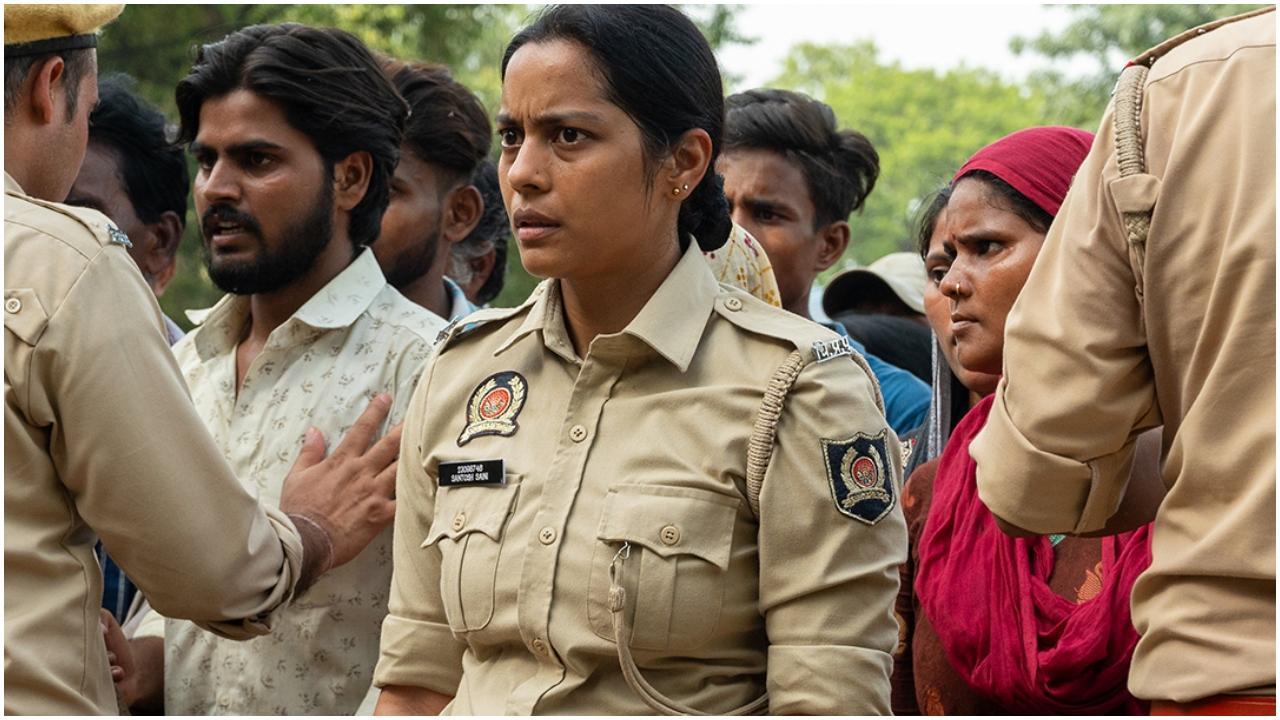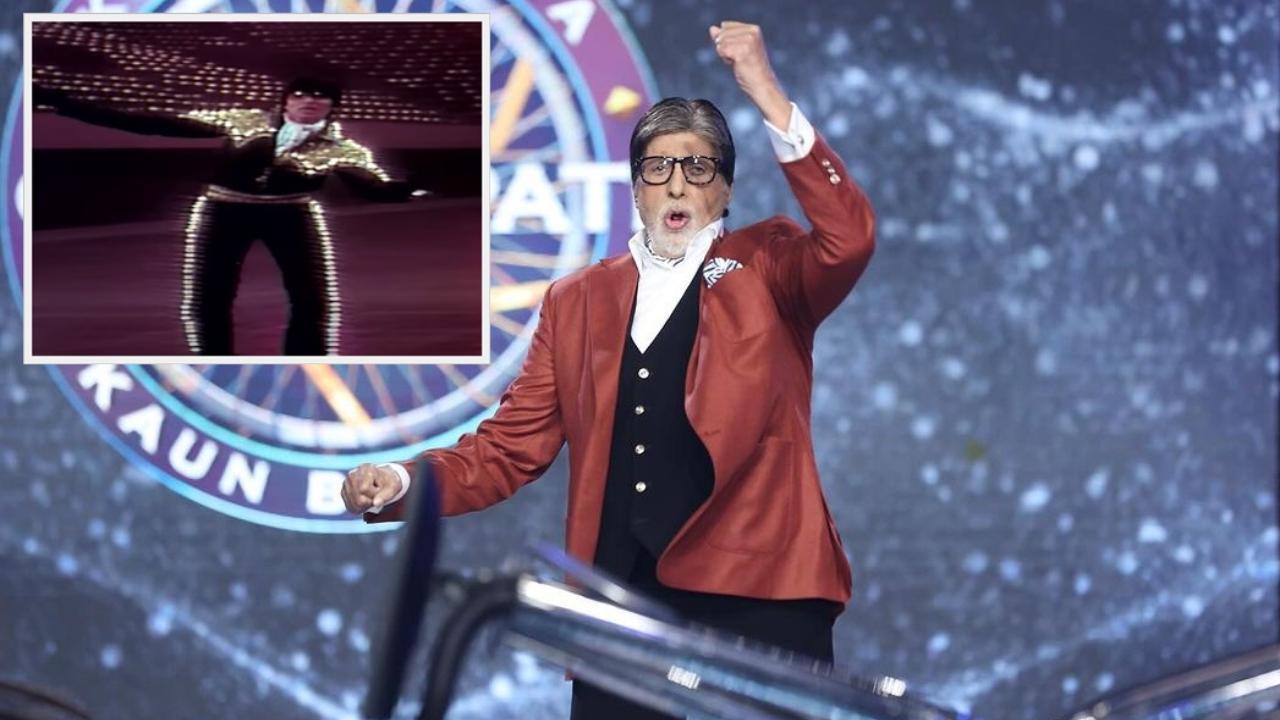Actress Kate Winslet stars as Lee Miller in her new film ‘Lee’. Miller was a model turned photographer who took many pictures relating to the life and work of James Joyce Photographer Lee Miller in Adolf Hitler's bathtub in 1945. Photo: David E Scherman A man in Barney Kiernan’s pup in Dublin in 1946.
Photo: Lee Miller Archives Kate Winslet as Lee Miller in 'Lee' Lee Miller talking to art critic Frederick Laws at a play in London in March 1950. Photo: Getty A woman admiring the photographic exhibition titled 'Lee Miller in James Joyce's Dublin' at the James Joyce Centre in 2014 Does Kate Winslet enjoy a pint? Certainly her alter ego, Lee Miller, got the smell of Guinness firmly in her nostrils when she visited Dublin for Vogue magazine in 1946. This remarkable woman, the subject of Winslet’s new film Lee , left behind an archive of photographs inspired by James Joyce’s Dublin, the most notable of them being boys playing near the Martello Tower at Sandycove, where Ulysses opens, and Barney Kiernan’s pub which she immortalised with a photograph of an old man sinking a pint of Guinness.

Her life, up to her arrival in Dublin that year, “reads like an improbable Hollywood plot” said the blurb to an exhibition of her work in the James Joyce Centre some years ago. Originally from upstate New York, Lee Miller was raped as a child. She went on to become a model for Vogue and then a photographer.
She moved to Paris, becoming the lover, muse and assistant to the avant-garde artist Man Ray before moving to London. Lee slept in Hitler’s bed and was photographed in his bathtub by Life photographer David Scherman when the Allies took Munich With the outbreak of World War II, she became a war correspondent, documenting the Blitz, the liberation of the concentration camps at Buchenwald and Dachau and famously sleeping in Adolf Hitler’s bed and being photographed in his bathtub by Life photographer David Scherman when the Allies took Munich. Scarred by what she had seen and heard she turned to alcohol.
Possibly to take her mind off the horrors of war, a Vogue editor dispatched her to Dublin to illustrate an article ‘When James Joyce Lived in Dublin’ for the magazine. The article was written by Constantine Curran, a college pal of Joyce’s at University College Dublin, who remained a lifelong friend of the writer. Joyce had once pronounced: “If I can get to the heart of Dublin, I can get to the heart of all the cities in the world.
” A man in Barney Kiernan’s pup in Dublin in 1946. Photo: Lee Miller Archives Although much of the city he chronicled lives on only between the covers of old Thom’s Directories , Lee Miller did manage to track down a few of the original landmarks that characterised Joyce’s Dublin. Back then much of the city was untainted by the prosperity that would reduce many of the landmarks he immortalised to rubble.
“The collection provides an inside view of Miller’s journey, more than 60 years after the fact, and is a unique portrait of post-war Dublin including many fascinating images relating to the life and work of Joyce — including some important Joycean locations that were thought never to have been photographed,” according to the catalogue accompanying an exhibition of her photographs in the Joyce Centre in 2014. The article and photographs appeared in American Vogue in May 1947 and British Vogue in 1950. The pictures provide a record of Dublin in the aftermath of the war, when neutrality, emigration and poverty had made the country a backwater.
After all these years, what remains of Lee Miller’s Dublin let alone the city that James Joyce criss-crossed? The film Lee was made in 2023 as a pet project of Kate Winslet. Directed by Ellen Kuras and starring Winslet, Marion Cotillard and Josh O’Connor, it was adapted from a 1985 biography by Miller’s son Antony Penrose. It took eight years to make and is only now being released in cinemas, to acclaim from some critics.
Kate Winslet as Lee Miller in 'Lee' After all these years, what remains of Lee Miller’s Dublin let alone the city that James Joyce criss-crossed flitting from one rented house to the next as the family fortunes dwindled? The truth is, little enough, which becomes abundantly clear when you visit Little Britain Street, just off Capel Street in central Dublin which is around the corner from the old Green Street Courthouse that used to house the Special Criminal Court. Bernard (Barney) Kiernan’s pub at No 8 is gone, although the building still exists. It was put up for sale in 2022 and remains intact, unlike many other buildings around the corner in Green Street, its windows boarded up and disfigured by graffiti.
Those who know their Joyce also know that the pages of his most famous book, Ulysses , are peppered with Dublin pubs — Dan Bergin’s (now Lloyd’s), the Signal House under Amiens Street bridge (now J&M Cleary’s), Dunphy’s in Phibsboro (now Doyle’s) and The Oval bar, which still retains its own name. And that’s only a few of them. Most of them are only namechecked in the book as Leopold Bloom and Stephen Dedalus wander the streets of the city on June 16, 1904, ending up in one of the biggest “red light districts” in Europe, behind Talbot Street, where prostitution was legal.
What makes Davy Byrnes in Duke Street and the bar of the Ormond Hotel different from most of the others is that events take place in both establishments, and Barney Kiernan’s pub is particularly special for Joycean scholars because nearly all of Chapter 12 in Ulysses is set in the bar. Lee Miller talking to art critic Frederick Laws at a play in London in March 1950. Photo: Getty In the episode, timed at 5pm, Leopold Bloom, the non-practising Jewish protagonist, encounters The Citizens, based on the antisemite bigot Michael Cusack, founder of the GAA, who is in the pub with his vicious dog Garryowen waiting for people to buy him drink.
Joyce viciously lampooned Cusack in Ulysses and the episode ends with the enraged Irish nationalist chasing Bloom from the pub and flinging a biscuit tin after him, to the amusement of locals. Many devotees of Joyce and Bloomsday speculate on what is the most Joycean pub in Dublin today. Mulligan’s of Poolbeg Street, which is not in the book, but features in a short story in Dubliners , is generally given that honour as is Kavanagh’s (The Gravediggers) in Glasnevin.
But on my own perambulations around Dublin pubs, and going by Lee Miller’s famous photograph taken in Barney Kiernan’s, neither they nor the other Victorian pubs that remain really fit the bill. Of course, the timeline is right, and most of the old pubs serve a superior pint, but they are a little too fancy to recapture the atmosphere of a working man’s pub in 1904. My own candidate for the title is Fallon’s Capstan Bar in The Liberties.
Inside it remains what a working man’s pub would have looked like back then and, at 5pm at least, has a touch of the same atmosphere. It isn’t in Ulysses or any other Joyce story, but its original, unfussy and unpretentious air makes it, if not exactly like Barney Kiernan’s, at least very much in the same vein. A woman admiring the photographic exhibition titled 'Lee Miller in James Joyce's Dublin' at the James Joyce Centre in 2014 As for Lee Miller, after her assignment she returned to England where she lived with her husband Sir Roland Penrose, until her death at the age of 70 in 1977.
During her lifetime she didn’t bother with self-promotion, but since her death her photographic archive of more than 60,000 prints, including the Dublin episode, are now in the Lee Miller Archives. And after all those years her life has been immortalised on screen, thanks to the admiration and persistence of Kate Winslet, in a film that’s a far cry from The Holiday . Join the Irish Independent WhatsApp channel Stay up to date with all the latest news.
.jpg)



















